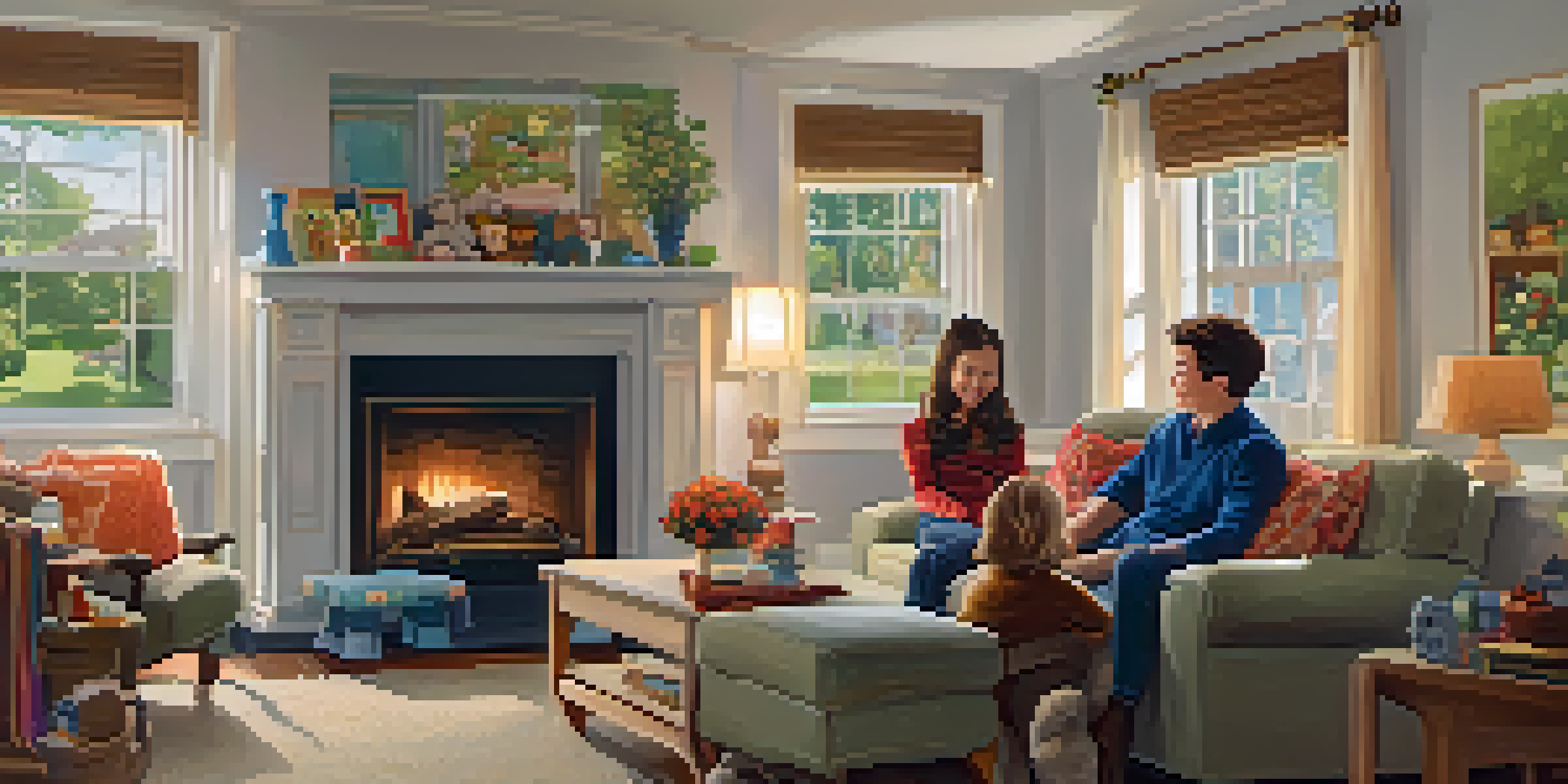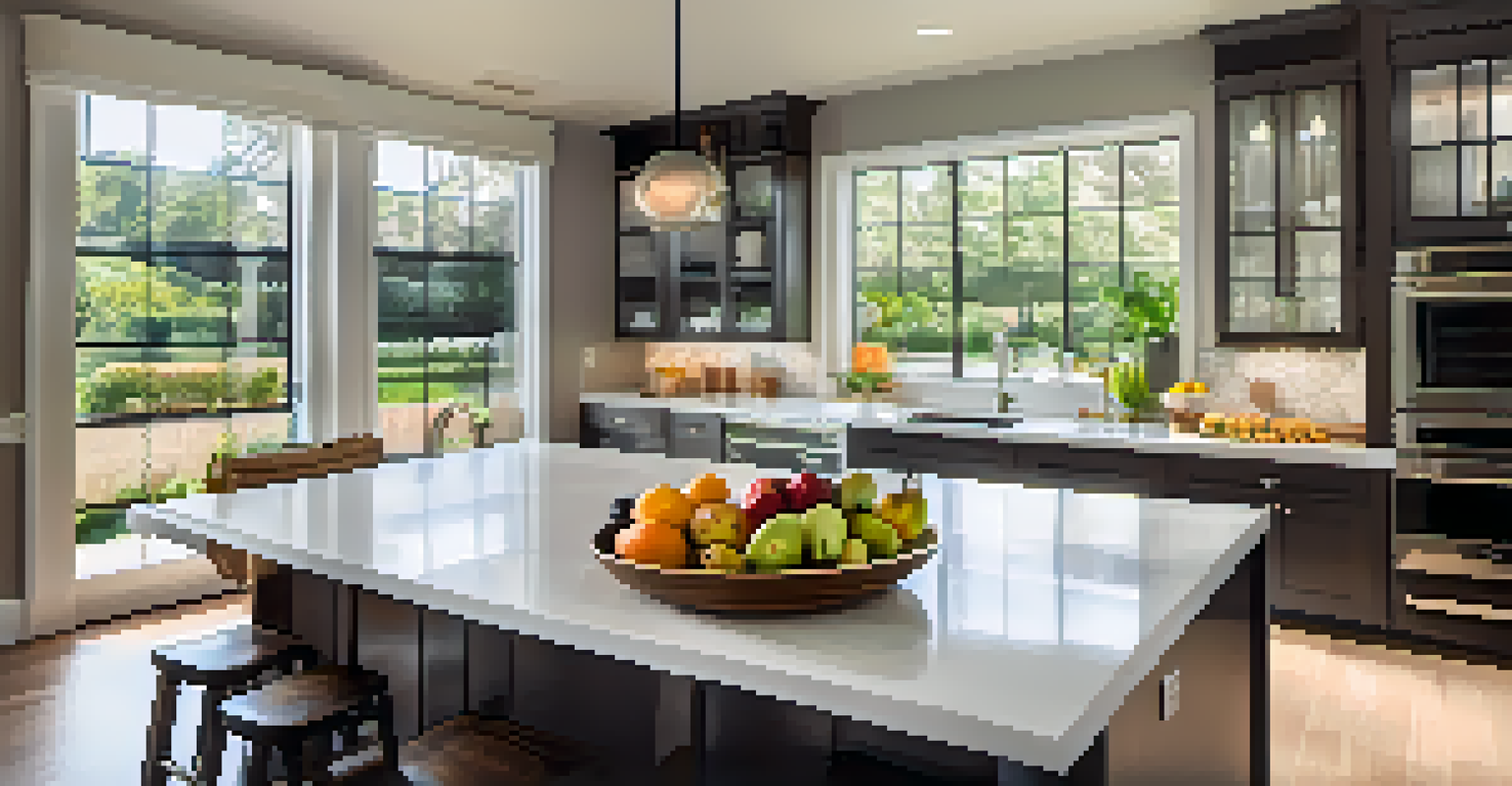The Psychology of Home Buyers: Flipping Insights

Understanding Home Buyer Motivations and Emotions
Home buying is not just a financial transaction; it’s an emotional journey. Buyers often seek a place that resonates with their values, dreams, and aspirations. For instance, a family might be motivated by the desire for a safe neighborhood where their children can grow up happily.
Home is not a place, it's a feeling.
Psychologists suggest that emotions heavily influence decision-making. When buyers step into a home, they’re not just looking at walls and floors; they are envisioning their future within that space. This emotional connection can lead to impulsive decisions, sometimes overriding logical considerations.
Understanding these emotional drivers can help sellers and real estate agents present properties in a way that resonates with buyers. By highlighting features that evoke feelings—like a cozy fireplace for family gatherings—sellers can create a compelling narrative that draws buyers in.
The Role of Cognitive Bias in Home Buying Decisions
Cognitive biases are mental shortcuts that can shape our perceptions and decisions. For home buyers, biases like the anchoring effect can play a significant role; for example, the first home a buyer sees often sets their price expectations for others. If that first home is within a certain price range, subsequent homes are measured against it.

Another common bias is the confirmation bias, where buyers focus on information that supports their pre-existing beliefs about a property. If someone believes a neighborhood is great, they'll likely overlook any negative aspects, reinforcing their initial impression.
Emotions Drive Home Buying Choices
Home buying is deeply emotional, with buyers often envisioning their future in a space, which can lead to impulsive decisions.
Being aware of these biases can empower home buyers to make more informed choices. By actively seeking diverse opinions and remaining open to new information, buyers can counteract these mental shortcuts and arrive at a more balanced decision.
The Importance of Social Proof in Home Buying
Social proof refers to the influence of other people's opinions on our decisions. In real estate, this can manifest in various ways, from online reviews to recommendations from friends. When potential buyers see positive feedback about a neighborhood or property, it may increase their desire to explore further.
The most important thing to remember is that you are not alone in this process; the right home will find you when you are ready.
For instance, a home that has been well-reviewed on social media or through word of mouth can create a buzz, making it more attractive to buyers. This phenomenon highlights why staging a home and generating positive testimonials can significantly impact its marketability.
Incorporating social proof into marketing strategies can therefore be a game changer. Sellers can leverage testimonials, success stories, and even before-and-after photos of flipped homes to build credibility and trust among potential buyers.
The Power of First Impressions in Home Buying
First impressions are critical in real estate; they can make or break a sale. Buyers often form opinions about a home within seconds of entering, influenced by factors like smell, lighting, and overall cleanliness. A well-organized space can evoke feelings of comfort and warmth, making buyers more likely to envision themselves living there.
Consider the impact of curb appeal. A charming exterior can attract buyers from the street, creating a positive first impression before they even step inside. Investing in landscaping or fresh paint can significantly enhance a property's attractiveness.
Cognitive Biases Affect Perceptions
Cognitive biases, like anchoring and confirmation bias, can shape how buyers perceive value and make decisions about properties.
By understanding the significance of first impressions, sellers can focus on creating inviting environments that resonate with potential buyers. Simple tweaks can enhance perceived value and encourage buyers to consider a purchase seriously.
The Influence of Personalization on Buyer Engagement
Personalization plays a crucial role in engaging potential home buyers. When buyers can envision their lives in a space, they are more likely to move forward with a purchase. This is why staging homes with neutral decor and inviting atmospheres can be so effective—buyers can easily project their lives onto that blank canvas.
Additionally, offering customizable options can further enhance buyer interest. For example, allowing buyers to choose finishes or layouts can create a sense of ownership even before they make a purchase decision.
By tapping into the desire for personalization, sellers can foster deeper connections with buyers. When people feel a property is tailored to them, it increases their emotional investment and likelihood of making an offer.
How Fear of Missing Out Affects Home Buying
Fear of missing out (FOMO) is a powerful motivator in many areas of life, and home buying is no exception. When buyers perceive a property as highly sought after or limited in availability, they may rush into a decision out of fear that they’ll lose their chance. This urgency can lead to quicker offers and higher purchase prices.
For instance, open houses that attract large crowds can create an impression of desirability. When buyers see others interested in a property, it can trigger their competitive instincts, pushing them to act faster than they might have otherwise.
Social Proof Enhances Market Appeal
Positive feedback and testimonials significantly influence buyer interest, highlighting the importance of social proof in real estate.
Understanding the impact of FOMO can help sellers create a sense of urgency. By highlighting the unique features of a property and emphasizing its popularity, sellers can encourage potential buyers to act swiftly, often resulting in quicker sales.
The Impact of Market Trends on Buyer Psychology
Market trends can significantly influence home buyer psychology. When the market is booming, buyers may feel more confident and willing to invest, believing that property values will continue to rise. Conversely, during downturns, fear and uncertainty can lead to hesitation and lower buying activity.
For example, a hot market can create a sense of urgency as buyers compete for limited inventory. This can drive prices up and result in bidding wars, where buyers may pay more than they initially planned due to the pressure of the situation.

By keeping an eye on market trends, buyers can better understand their own motivations and fears. Similarly, sellers can position their homes strategically to align with current market conditions, maximizing their chances of a successful sale.